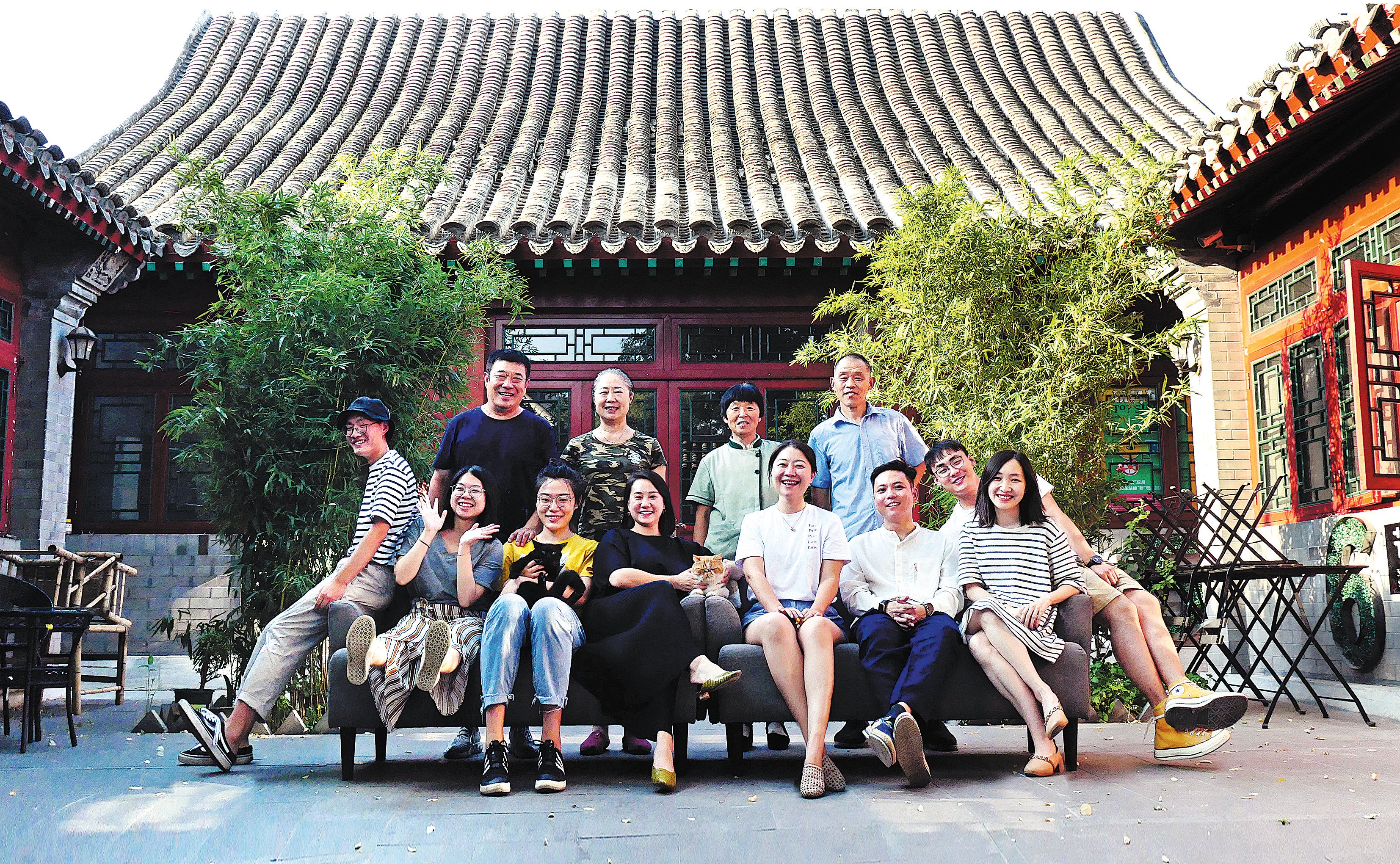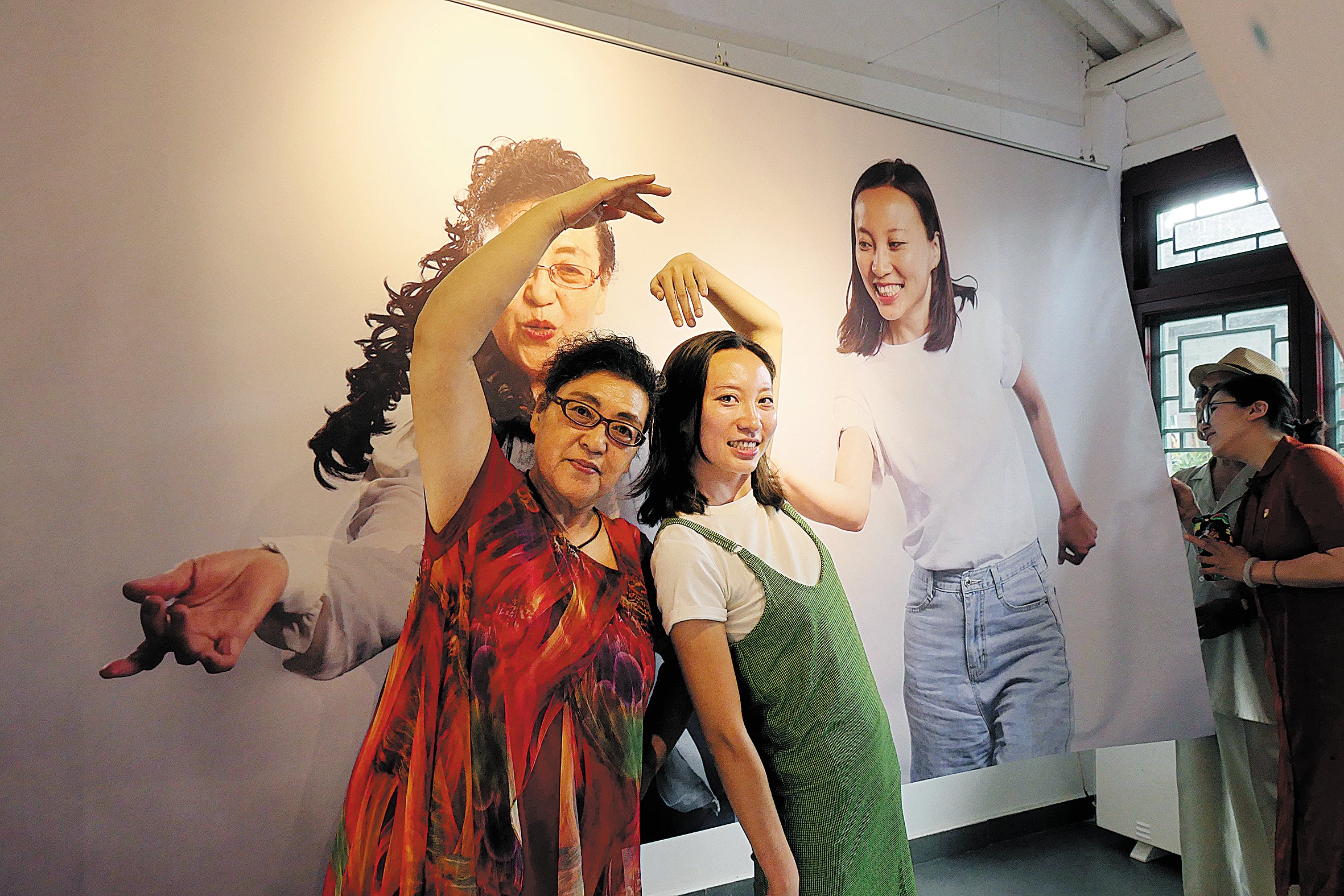Art gives hutong a sense of community
THE ARTICLES ON THESE PAGES ARE PRODUCED BY CHINA DAILY, WHICH TAKES SOLE RESPONSIBILITY FOR THE CONTENTS

The oasis in central Beijing’s Dongcheng district provides shelter from the hustle and bustle of the capital. Its name offers no clue to its traditional appeal but 27 Yard is actually a Beijing-style courtyard, with grey tile roofs, crimson doors, a tree that has witnessed passing generations taking shade, and cats lying lazily nearby soaking up what sunlight there is.
The courtyard has a vibrancy, a pulse of its own, with a variety of events taking place on a daily basis in its 10 main spaces that host a shop, a gallery, a reading area and a multimedia hall. Since 2016, it has been offering refreshing experiences to both nearby residents and visitors attracted by its reputation, from hobby groups and workshops to exhibitions and performances.
Niu Ruixue, founder of 27 Yard, also known as the Chaoyangmen Cultural Centre, completed her master’s degree in drama directing in France, and was interested in public art projects. She, with her friend Yu Ge, hosted an art festival in 2013 and more than 60 art projects in Beijing hutong throughout the following year.
Their experience in public art drew the attention of the Chaoyangmen subdistrict office of Dongcheng district people’s government, which invited them to work for the local community.

The cultural centre was opened to the public on September 10, 2016, and was soon named as the Chaoyangmen sub-venue for that year’s Beijing Design Week. But strangely, after a bustling first two months, the courtyard was shrouded in silence and locals hardly ever stepped inside. There was what modern market analysts would describe as a disconnect.
The centre then started to provide cultural activities that would cater to the interests of the locals, and answer the practical needs of the residents living in a hutong. Apart from offering venues to the community’s existing hobby groups, the centre also hosts innovative activities attended by both young and old people, such as retro dance parties, natural dyeing and coffee art workshops.
In 2018, the centre hosted the first edition of When I ... Just Like You, a project that sought to build a platform that connects and integrates the younger generation with senior residents.
The project gathered a dozen senior residents, aged up to 85, and a dozen young people, the youngest being 24, from all walks of life, and paired them with one another. The young people were assigned to take the elderly on a “date”, that is any activity they found interesting, and the old people were told to bring attire they wore at a younger age to show their young friends
“Many of the activities they organised were not only interesting, but also brought us inspiration, knowledge and thoughts. We especially liked the art project When I ... Just Like You. It made me feel that I was young again and was able to relive my life,” said Rui Li, an elderly local resident.
Previously published on Chinadaily.com.cn
